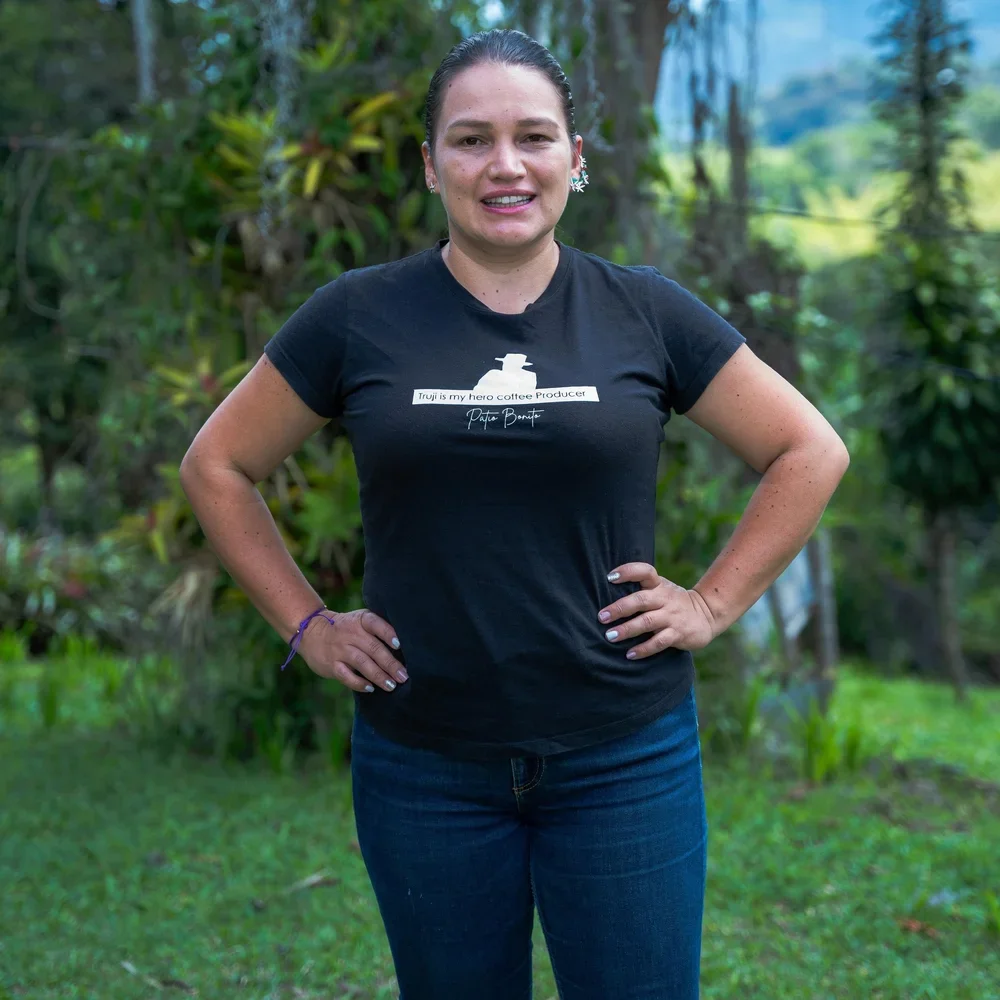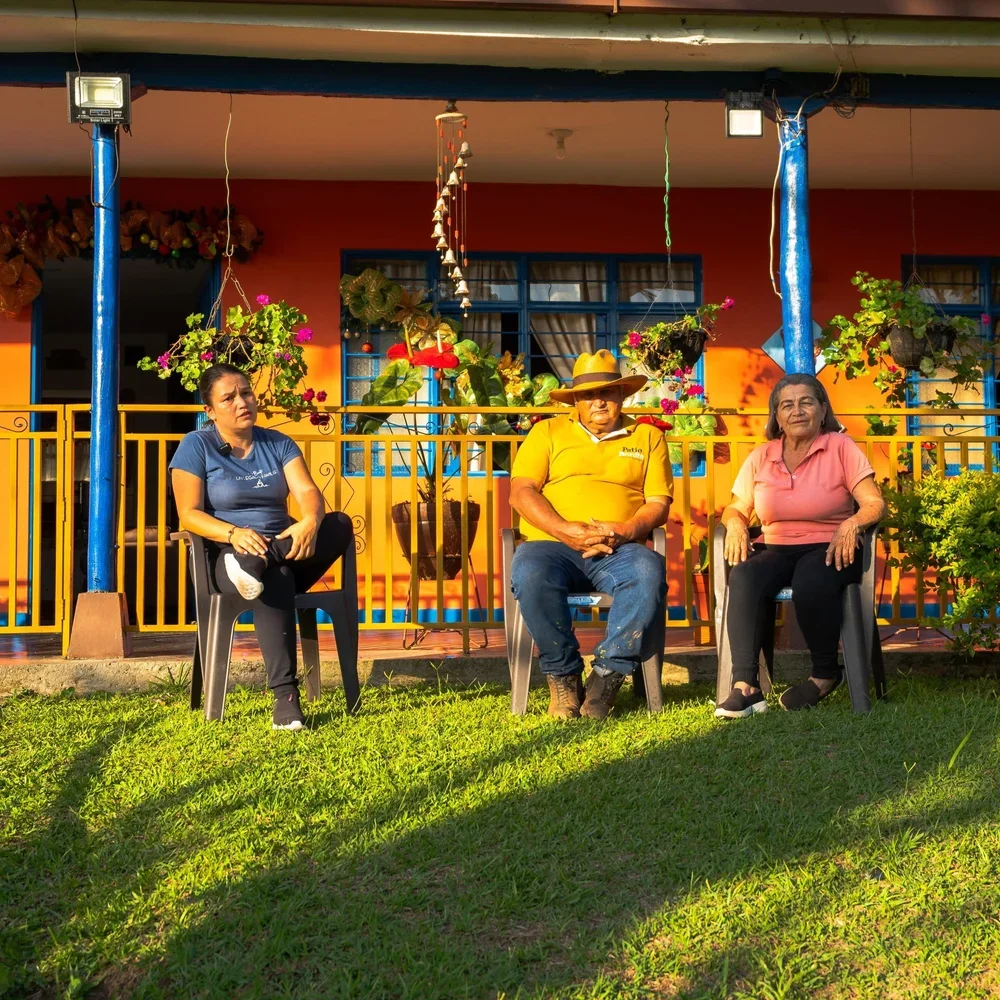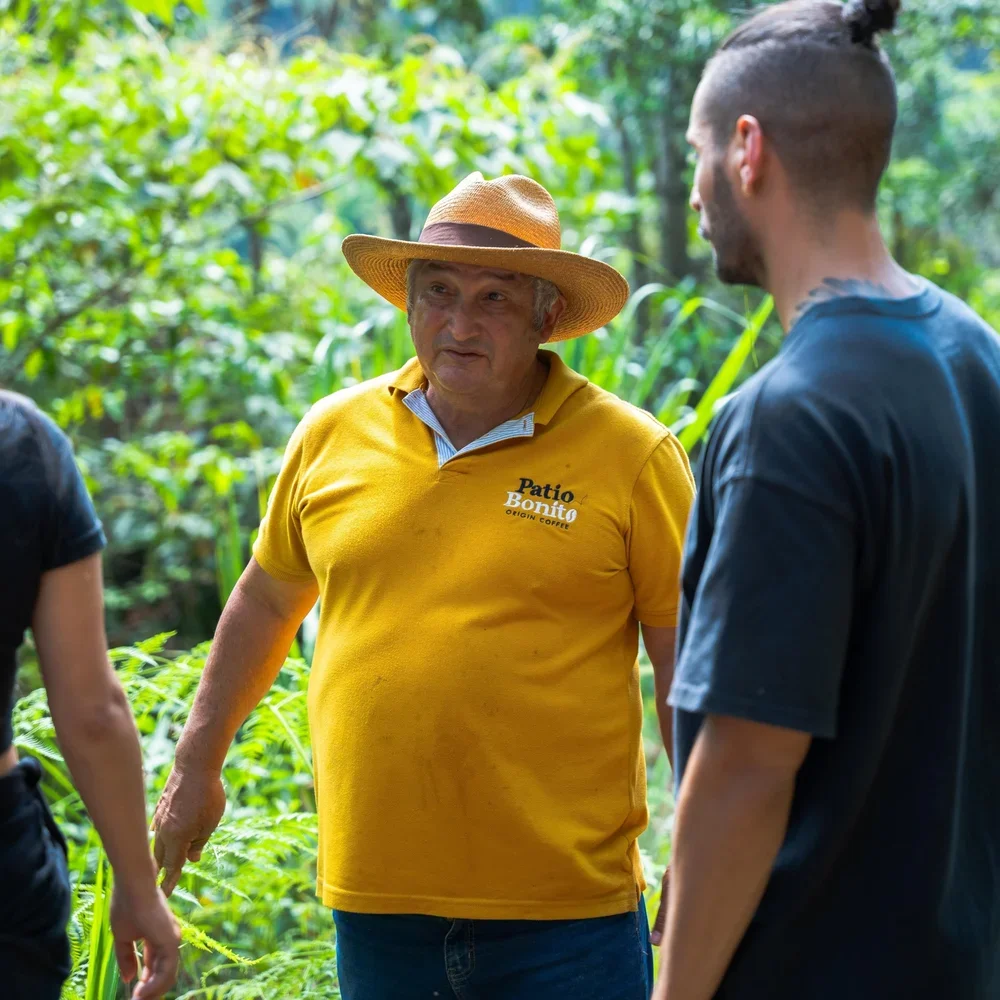 Image 1 of 3
Image 1 of 3

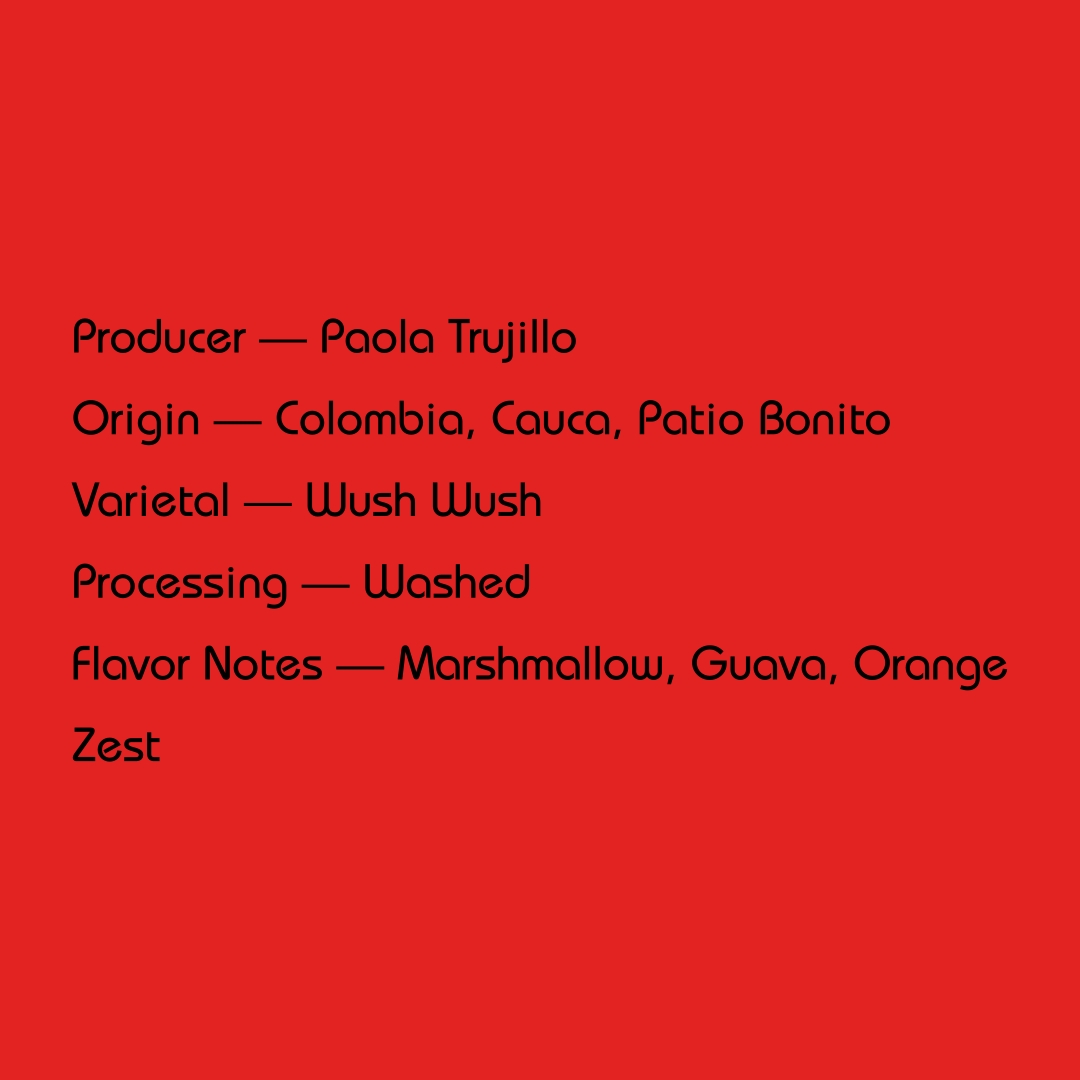 Image 2 of 3
Image 2 of 3

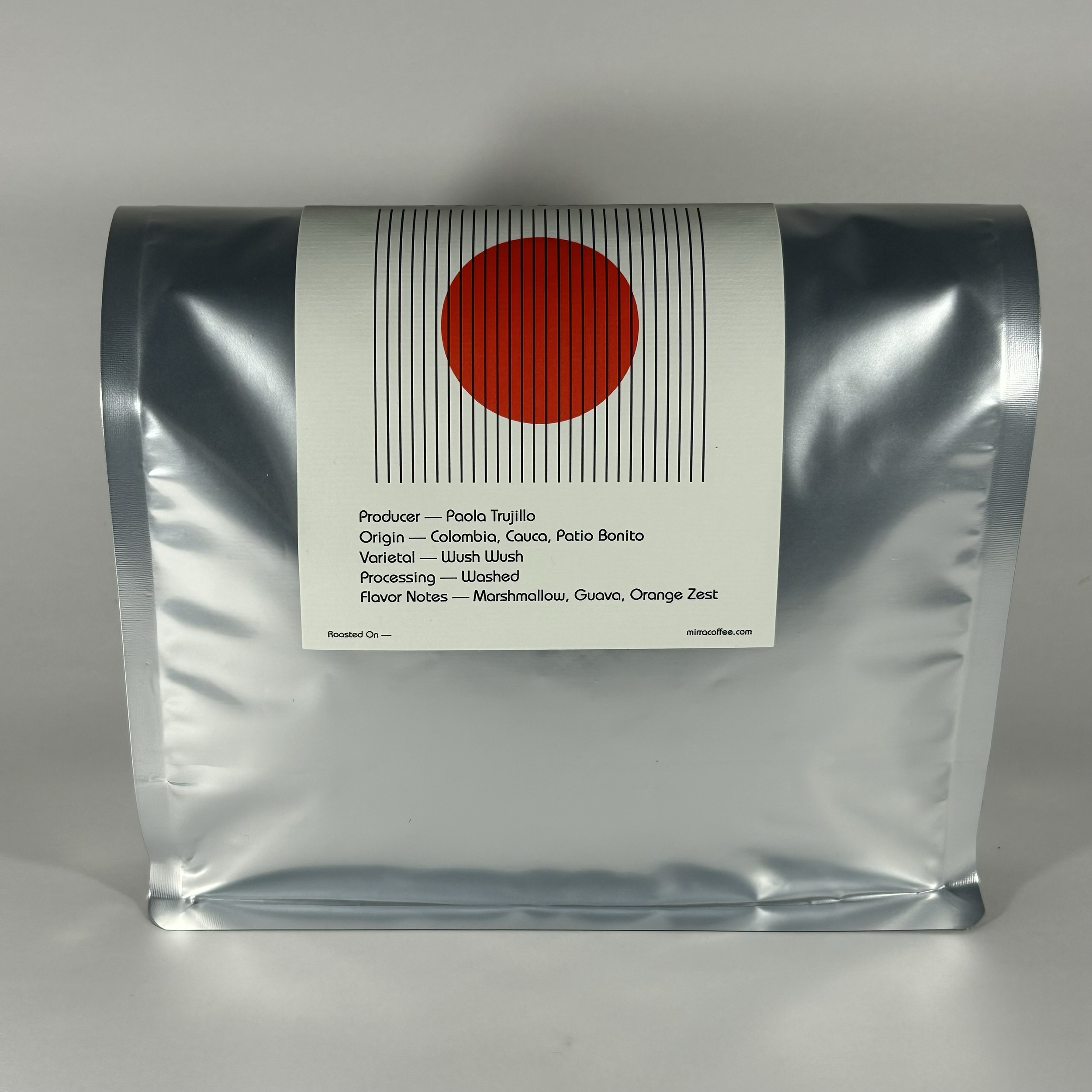 Image 3 of 3
Image 3 of 3




Colombia Paola Trujillo Wush Wush
This is our second year working with the unbelievably talented Paola Trujillo of Finca Patio Bonito, Cauca, Colombia, and we couldn’t be more pleased to present, for the first time on our menu, her washed wush wush. This is an undeniably expressive, clean representation of the wush wush varietal—presenting ample, thick, vanilla-adjacent marshmallowy sweetness up front, followed by bright, tropical guava fruit, and a distinct hit of orange zest. Truly a unique, beautifully balanced expression of its varietal and the terroir of Cauca.
Paola’s family farm, Patio Bonito, located at 1.700 masl in the coastal region of Cauca, Colombia, has been in the Trujillo family for two generations. It was founded by her father, Carlos Trujillo, who has begun ceding increasing authority over the farm over to his daughters, Paola and Patricia, who have learned the art and science of coffee cultivation which was garnered from Carlos’ 40+ years of experience as a coffee farmer and agroforestry engineer. Patio Bonito is comprised of 9 hectares, planted with over 45.000 coffee trees of varying varietals, such as castillo, typica, colombia, pink bourbon, sidra, wush wush, SL28, geisha, and aji, which makes up this lot.
Wush wush is a prime example of an Ethiopian landrace varietal which has been isolated—in this case from coffee groves around the town of Wushwush, Ethiopia—and then cultivated in the Americas, with the majority to date being cultivated in Colombia. The town of Wushwush is located in Ethiopia’s South West People’s Region, in the Bench Maji zone, which is also where gesha is native to. Wush wush first arrived in South America about 30 years ago, and was likely first imported to Colombia for the purposes of research at Cenicafe—Colombia’s foremost institute of coffee research. This makes wush wush yet another example of an Ethiopian landrace varietal that made its way to Colombia, just like chiroso, geisha, mejorado, papayo, pink bourbon, and aji. Like a classic, native Ethiopian landrace, it typically presents significant florals and fruits—especially stone and tropical fruit—in the cup.
All coffee is sold whole-bean to reduce oxidization, and increase the longevity of volatile aromatic compounds.
This is our second year working with the unbelievably talented Paola Trujillo of Finca Patio Bonito, Cauca, Colombia, and we couldn’t be more pleased to present, for the first time on our menu, her washed wush wush. This is an undeniably expressive, clean representation of the wush wush varietal—presenting ample, thick, vanilla-adjacent marshmallowy sweetness up front, followed by bright, tropical guava fruit, and a distinct hit of orange zest. Truly a unique, beautifully balanced expression of its varietal and the terroir of Cauca.
Paola’s family farm, Patio Bonito, located at 1.700 masl in the coastal region of Cauca, Colombia, has been in the Trujillo family for two generations. It was founded by her father, Carlos Trujillo, who has begun ceding increasing authority over the farm over to his daughters, Paola and Patricia, who have learned the art and science of coffee cultivation which was garnered from Carlos’ 40+ years of experience as a coffee farmer and agroforestry engineer. Patio Bonito is comprised of 9 hectares, planted with over 45.000 coffee trees of varying varietals, such as castillo, typica, colombia, pink bourbon, sidra, wush wush, SL28, geisha, and aji, which makes up this lot.
Wush wush is a prime example of an Ethiopian landrace varietal which has been isolated—in this case from coffee groves around the town of Wushwush, Ethiopia—and then cultivated in the Americas, with the majority to date being cultivated in Colombia. The town of Wushwush is located in Ethiopia’s South West People’s Region, in the Bench Maji zone, which is also where gesha is native to. Wush wush first arrived in South America about 30 years ago, and was likely first imported to Colombia for the purposes of research at Cenicafe—Colombia’s foremost institute of coffee research. This makes wush wush yet another example of an Ethiopian landrace varietal that made its way to Colombia, just like chiroso, geisha, mejorado, papayo, pink bourbon, and aji. Like a classic, native Ethiopian landrace, it typically presents significant florals and fruits—especially stone and tropical fruit—in the cup.
All coffee is sold whole-bean to reduce oxidization, and increase the longevity of volatile aromatic compounds.
